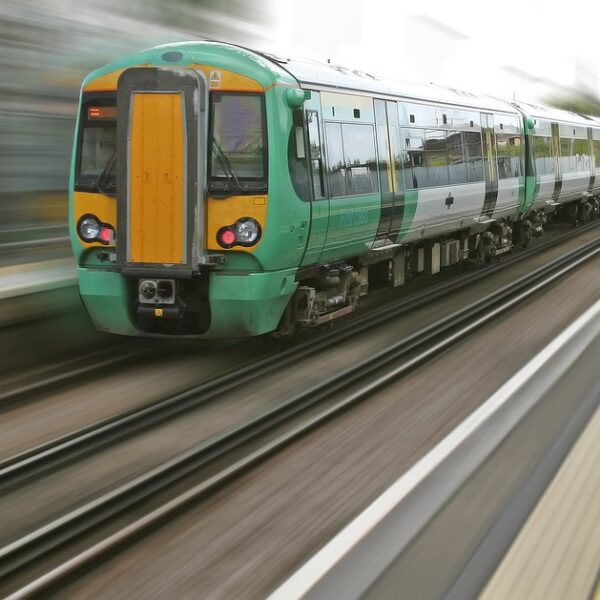In the bustling landscape of real estate, there’s more than meets the eye. Beyond the swanky interiors, modern architecture, and strategic locations, there’s an often overlooked factor influencing real estate trends: transportation. Not just your usual cars, buses, or trains, but quirky, out-of-the-box modes that can, quite literally, drive property choices.
From Gondolas to Camel-back: Transportation’s Unique Appeal
In Venice, the romantic allure of the gondola is undeniable. This timeless mode of transport not only adds charm to the city’s canals but also elevates the value of properties along its serene waterways. Similarly, in Dubai’s desert landscapes, camel rides offer an authentic experience, boosting desert resorts and vacation homes.
These unique transport modes are not just about mobility but encapsulate a city’s essence, its history, and its cultural richness. As travelers and residents seek more immersive experiences, these transport modes become integral to a location’s real estate worth.
The Future: Hoverboards, Drones, and More
Fast forward to our tech-savvy era, and innovations are bursting. Hoverboards, once a sci-fi fantasy, now skim urban streets. In some cities, personal drones are reshaping the very essence of “commuting,” offering bird’s-eye views and unmatched speed.
These technological marvels are not only conversation starters but increasingly influence property decisions. Apartments with drone-friendly balconies or neighborhoods with hoverboard tracks are becoming unique selling points, offering convenience and modernity.
How HomesEh Ties In
Speaking of real estate and its dynamic relationship with transportation, platforms like HomesEh recognize the potential. They’re not just listing properties but also highlighting unique transport modes nearby. This holistic approach gives potential buyers and renters a complete picture, ensuring that their next home is not just a house but a genuine experience.
Community and Connectivity: The Ripple Effect
Transport has always been an instrumental factor in shaping communities. Consider the London Underground or the New York City Subway; they’ve moved people but also transformed entire neighborhoods. While these are established modes of transport, the newer, quirkier ones can potentially have a similar ripple effect.
Imagine a coastal town where the primary mode of transport is paddleboarding from one home to another, using interconnected waterways. The sense of community this fosters, the environmental benefits of such a transport system, and the sheer joy of gliding over water daily can make real estate in such areas incredibly attractive.
Incorporating Nature: The Greener Modes
Beyond tech innovations, there’s a push towards greener, more sustainable modes of transport. Cycle paths in cities like Amsterdam or Copenhagen don’t just promote healthy living, they also boost real estate prices in areas that provide these amenities.
Similarly, towns and cities with green pathways, where one can walk or cycle amidst nature, see increased property valuations. This reflects a growing desire among homeowners to integrate nature into their daily commutes, turning the mundane into something magical.
Challenges Ahead: Integrating the Unconventional
While unconventional modes of transport appeal, integrating them poses challenges. Urban planning, safety concerns, and logistical considerations all come into play.
Real estate developers, in tandem with city planners, need to ensure these transport modes are safe, sustainable, and scalable. For instance, while hoverboard tracks sound futuristic, they need to be implemented in a manner that ensures safety of both riders and pedestrians.
Customization & Personalization: Meeting Individual Needs
One of the most intriguing aspects of these unconventional transport modes is the customization and personalization they offer. Unlike mass transit systems that operate on fixed routes and schedules, many quirky transport options can be tailored to individual preferences.
For instance, personal drones can be equipped with specific features catering to the owner’s needs. This could be extra storage space for goods or enhanced battery life for extended travel. Similarly, homes situated on unique terrains, like hillside properties, might adopt funiculars or cable cars customized to the resident’s design and aesthetic choices.
Economic Impacts: Boosting Local Economies
Every new mode of transport influences real estate and brings economic opportunities. Businesses quickly capitalize on these trends, leading to jobs and entrepreneurial ventures. Just as car culture gave birth to motels and drive-in cinemas, these new modes of transport have the potential to spur unique businesses.
Consider a coastal town where paddleboarding is a primary transport mode: paddleboard repair shops, rental stations, or even themed paddleboard cafes could emerge, further enhancing the town’s real estate appeal.
A Global Perspective: Different Strokes for Different Folks
It’s essential to recognize that unconventional transport isn’t just Western. Across the globe, from Asia’s cycle rickshaws to Africa’s matatus (shared minivans), local modes of transport have always added a distinct flavor to regions, impacting property values and preferences.
In bustling markets like India or Vietnam, properties located near cycle-rickshaw or auto-rickshaw hubs often fetch higher prices due to their convenience. These unique transport modes, deeply embedded in the local culture, play a pivotal role in determining real estate’s desirableness.
The Road Ahead: Embracing the Quirky
Real estate’s relationship with transport is a dance of mutual influence. As our world evolves, and as we push imagination boundaries, this relationship will grow even more nuanced.
For those intrigued by the nexus of transport and real estate, the future holds endless possibilities. And as we embrace more quirks, innovations, and traditions, our living spaces and communities will reflect a richer tapestry of human creativity and adaptability.
On the grand journey of life, where we choose to reside often reflects how we choose to move. So, as you ponder your next real estate move, consider not just the destination, but the vibrant modes of transport that might take you there.
